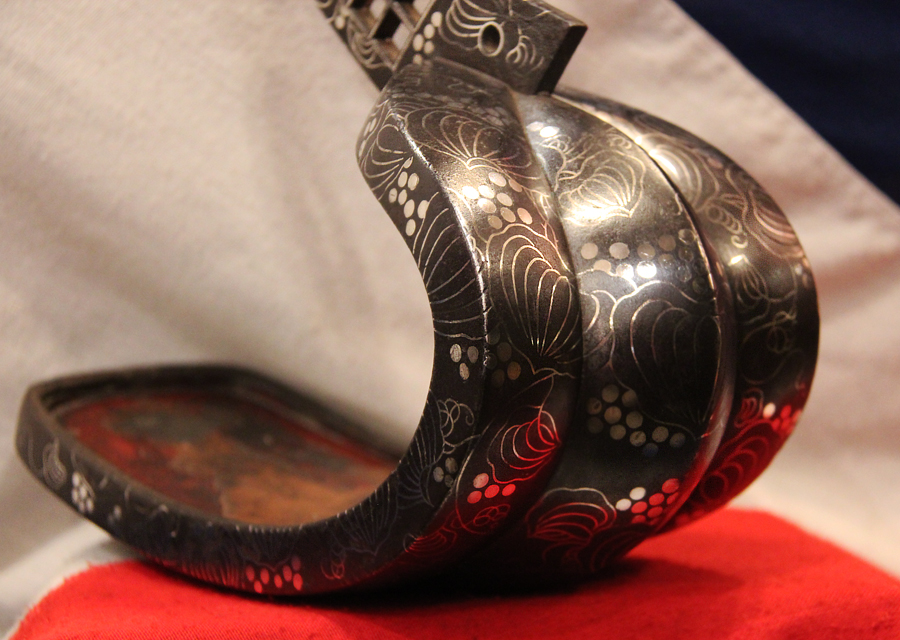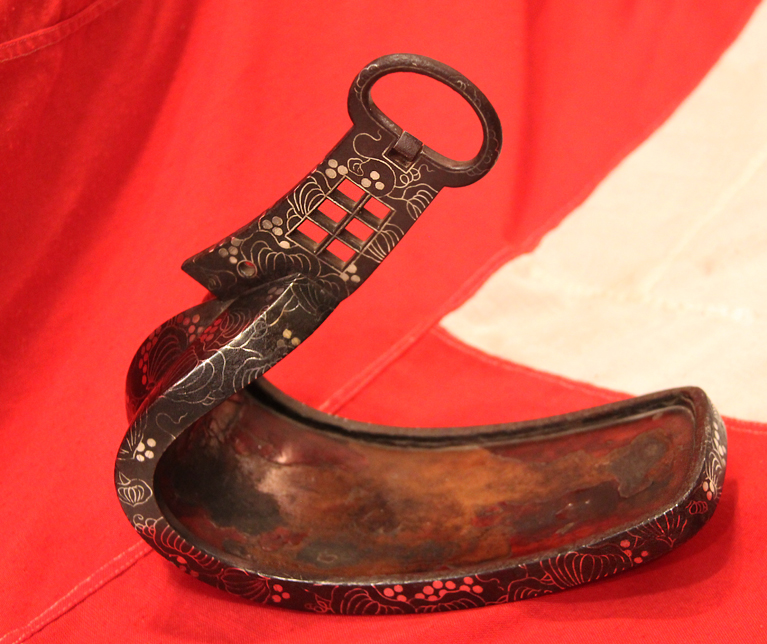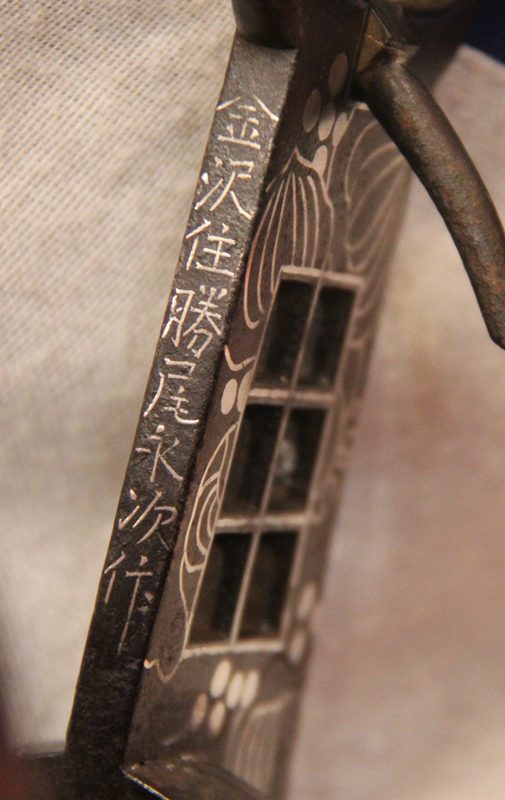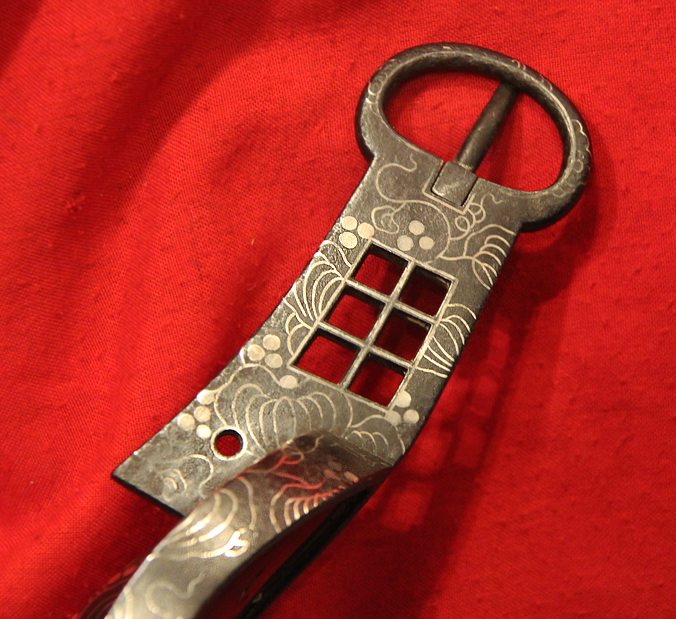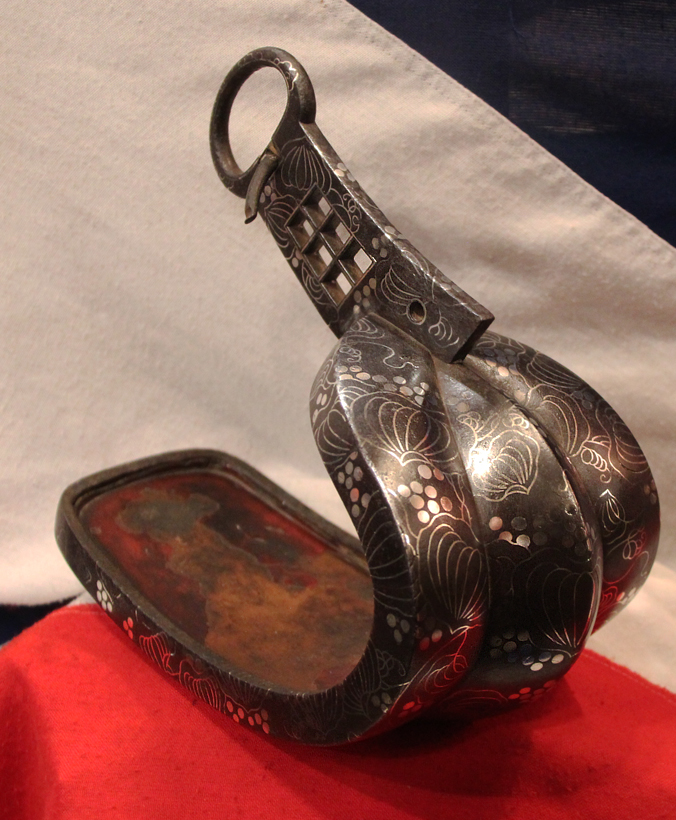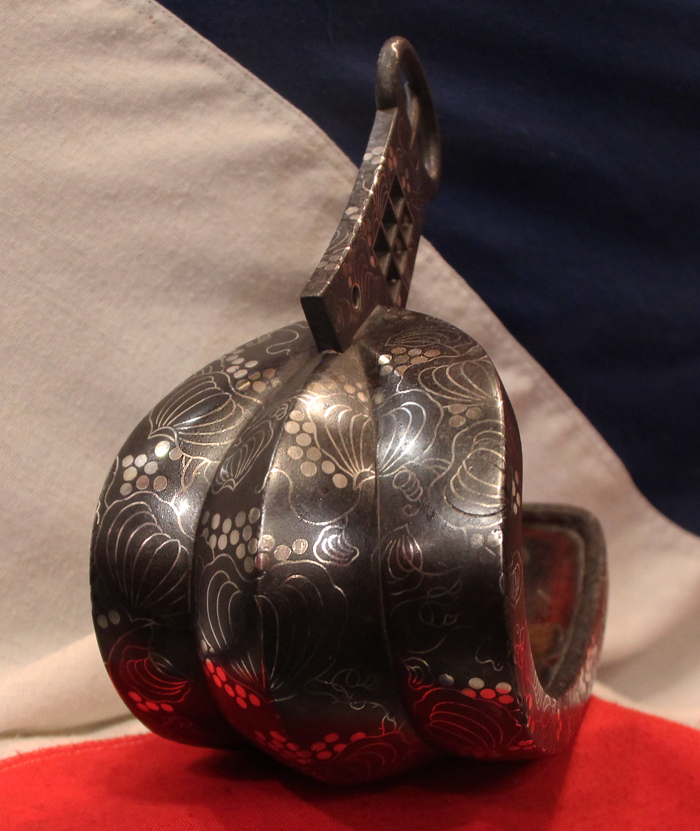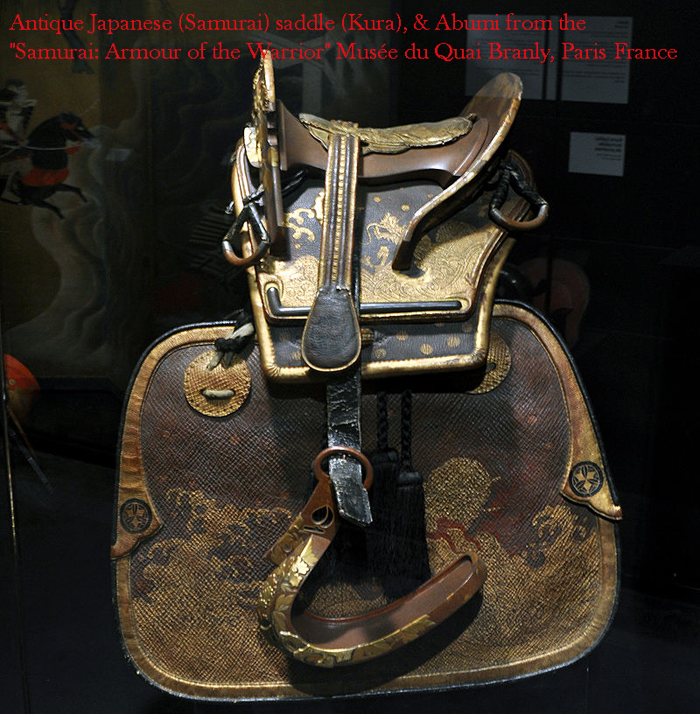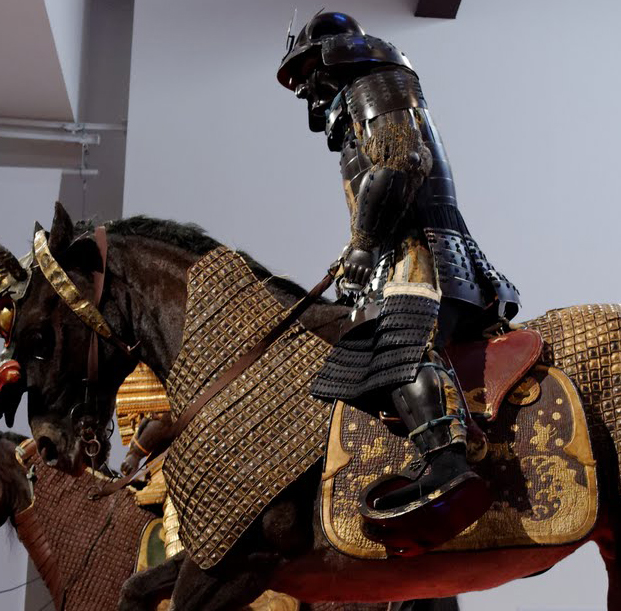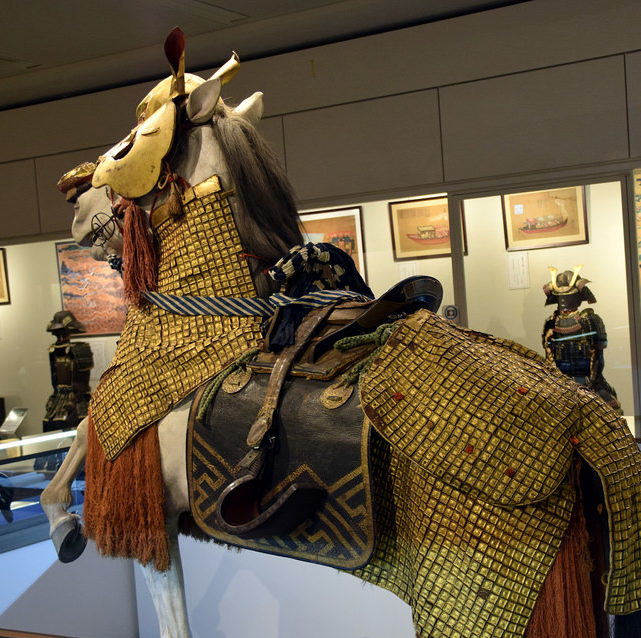A Wonderful, 18th Century Shinto Period Samurai Horse Armour Abumi, Made by Master Katsuo Nagatsugu of Kanezawa In Kaga. Used By The Samurai To Stand Up, Off The Saddle Upon The Horse, At The Gallop, And Simulatanously Fire His War Bow.
This incredibly beautiful Kaga zougan abumi, a stunning work of art as much as a piece of vital samurai battle armour, is a signed armoured samurai stirrup, made in wrought iron and silver of exceptional quality, and craftsmanship and bears stunningly beautiful silver inlay of scrolling vines, leaves and berries. Made by one of the great master armour makers in Kaga province.
We have only ever had one other made by this great master in 50 years, and that was around six years ago.
This is truly noteworthy museum grade work of art in its own right. An absolutely singular example, perfectly displaying the skill and technical craftsmanship of the highest order, for antique Japanese accoutrements, handmade for a samurai Daimyo clan lord or for a Seieibushi samurai the highest ranking of the samurai Made and used as part of his armour saddle fittings, but also for use as much when the samurai was in full armour or in regular daytime wear. The signature, of the master craftsman, is inlaid in pure silver to match the decor, translates to 'Made by Katsuo Nagatsugu residing in Kanezawa in Kaga province' a most highly rated and famous maker of finest abumi.
Some examples of his work are in the Kanezawa Museum in Japan.
Abumi, Japanese stirrups, were used in Japan as early as the 5th century, and were a necessary component along with the Japanese saddle (kura) for the use of horses in warfare. Abumi became the type of stirrup used by the samurai class of feudal Japan Early abumi were flat-bottomed rings of metal-covered wood, similar to European stirrups. The earliest known examples were excavated from tombs. Cup-shaped stirrups (tsubo abumi) that enclosed the front half of the rider's foot eventually replaced the earlier design.
During the Nara period, the base of the stirrup which supported the rider's sole was elongated past the toe cup. This half-tongued style of stirrup (hanshita abumi) remained in use until the late Heian period (794 to 1185) when a new stirrup was developed. The fukuro abumi or musashi abumi had a base that extended the full length of the rider's foot and the right and left sides of the toe cup were removed. The open sides were designed to prevent the rider from catching a foot in the stirrup and being dragged.
The military version of this open-sided stirrup, called the shitanaga abumi, was in use by the middle Heian period. It was thinner, had a deeper toe pocket and an even longer and flatter foot shelf. It is not known why the Japanese developed this unique style of stirrup, but this stirrup stayed in use until European style-stirrups were introduced in the late 19th century. The abumi has a distinctive swan-like shape, curved up and backward at the front so as to bring the loop for the leather strap over the instep and achieve a correct balance. Most of the surviving specimens from this period are made entirely of iron, inlaid with designs of silver or other materials, and covered with lacquer. In some cases, there is an iron rod from the loop to the footplate near the heel to prevent the foot from slipping out. The footplates are occasionally perforated to let out water when crossing rivers, and these types are called suiba abumi. There are also abumi with holes in the front forming sockets for a lance or banner. Seieibushi (Elite Samurai)
Traditionally the highest rank among the samurai, these are highly skilled fully-fledged samurai. Most samurai at the level of Seieibushi take on apprentices or Aonisaibushi-samurai as their disciples.
Kodenbushi (Legendary Samurai)
A highly coveted rank, and often seen as the highest attainable position, with the sole exception of the rank of Shogun. These are samurai of tremendous capability, and are regarded as being of Shogun-level. Kodenbushi are hired to accomplish some of the most dangerous international missions. Samurai of Kodenbushi rank are extremely rare, and there are no more than four in any given country.
Daimyo (Lords)
This title translates to 'Big Name' and is given to the heads of the clan.
Shogun (Military Dictator)
The apex of the samurai, the Shogun is the most prestigious rank possible for a samurai. Shoguns are the leaders of their given district, or country, and are regarded as the most powerful samurai.Beautiful and sophisticated patterns in Kaga zougan have an outstanding, keen feel for designs and such fine expression is supported by the minute methods. The craftsman carves the pattern part on the metallic basis material with a burin (tagane in Japanese), making the bottom wider than the surface (this method is called "ari wo kiru" in Japanese) and inserts and drives in a different metal in the part.
Then, the metallic part for the pattern is pressed and spread inside and does not come off itself. This bonding technology was closely employed especially in Kaga to enable to express variously on the metal for expressive work and gained a high reputation as for the solid work.
Of all the techniques, "Abumi" (stirrup) has been a synonym for Kaga zougan and well known for the scrupulous technique making sure that the metallic parts of Kaga zougan never come off, in addition to its excellent novel designs and beauty.
Code: 22106
2950.00 GBP


